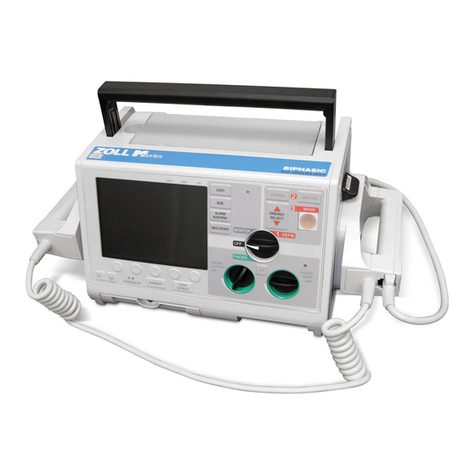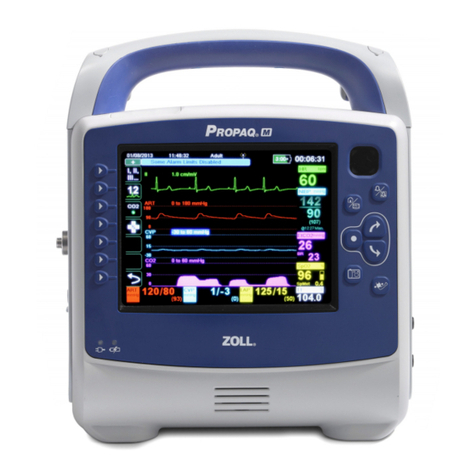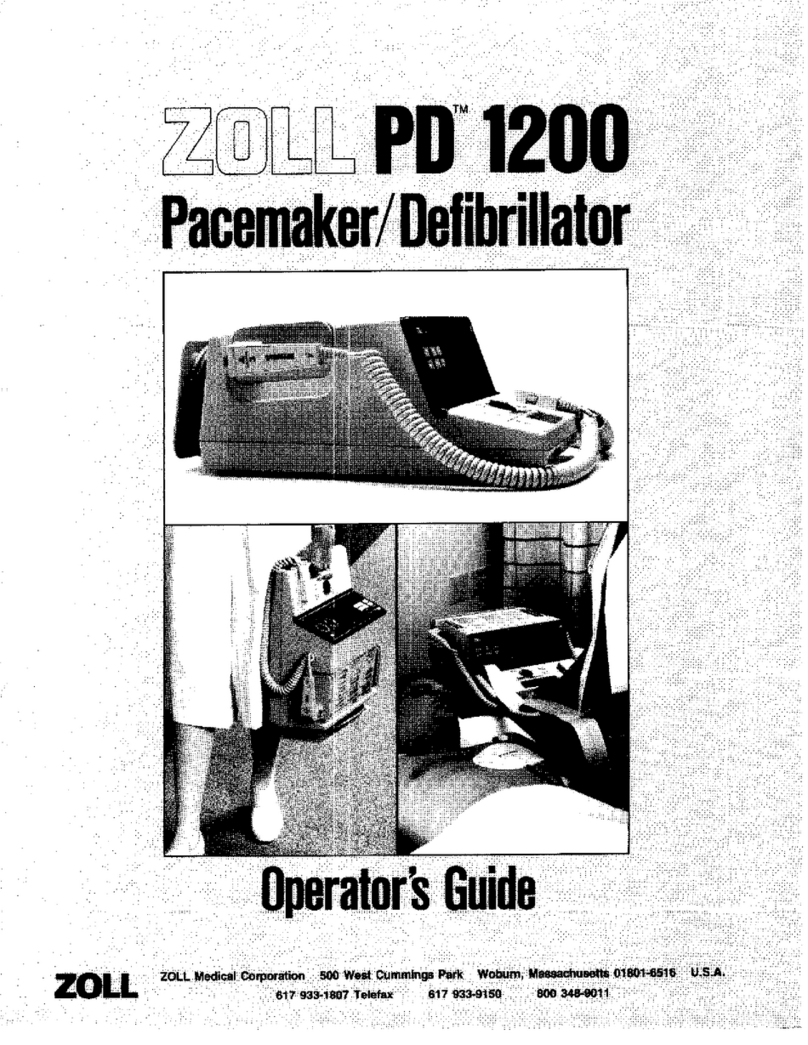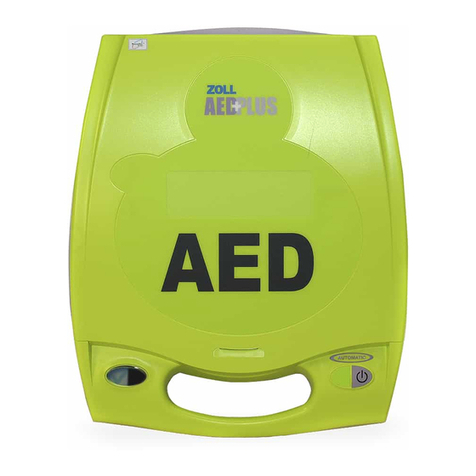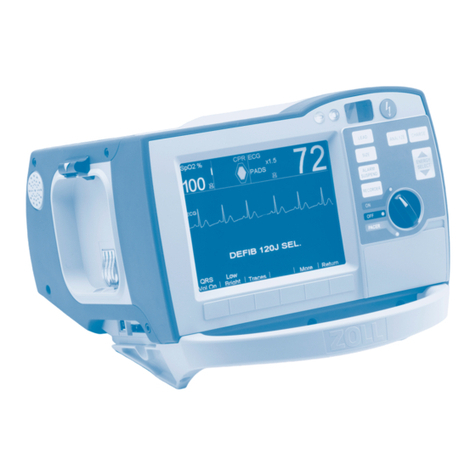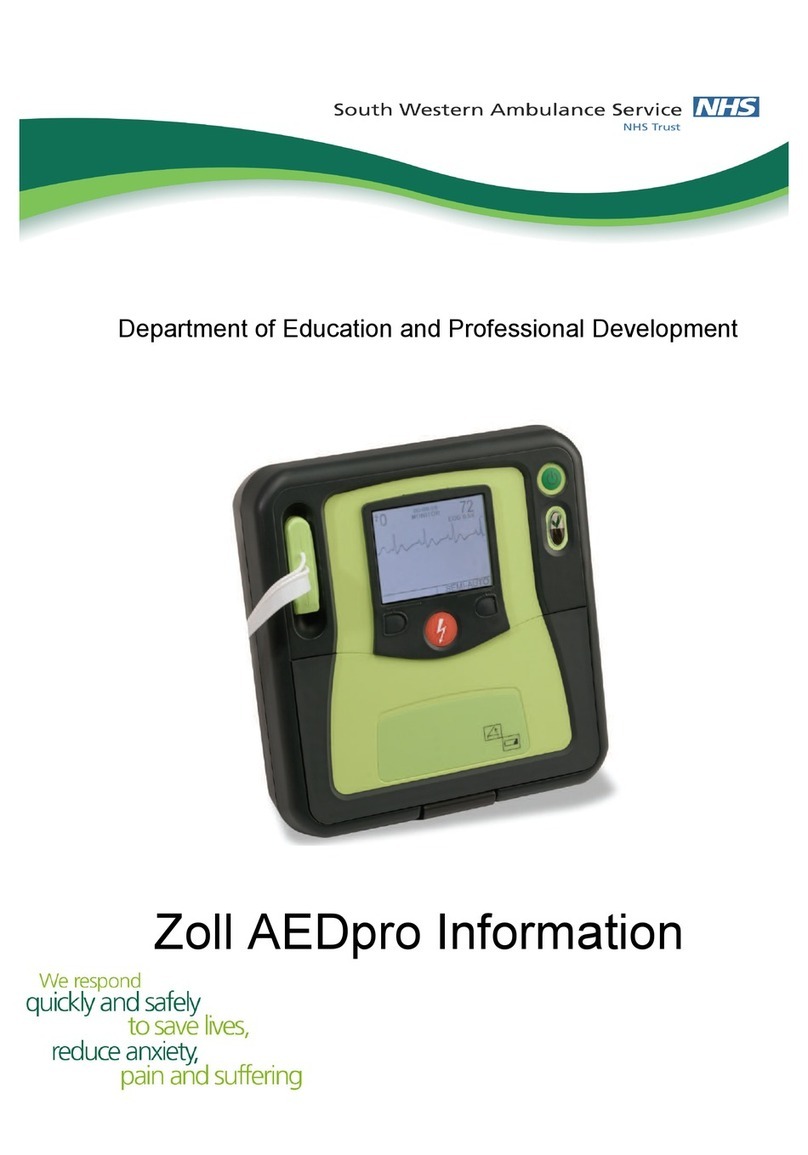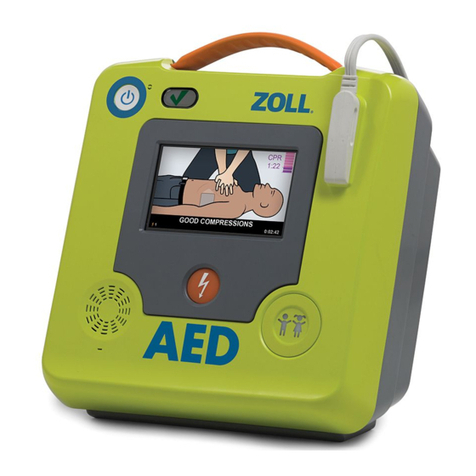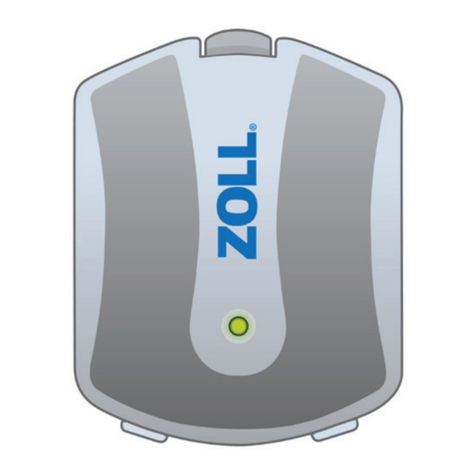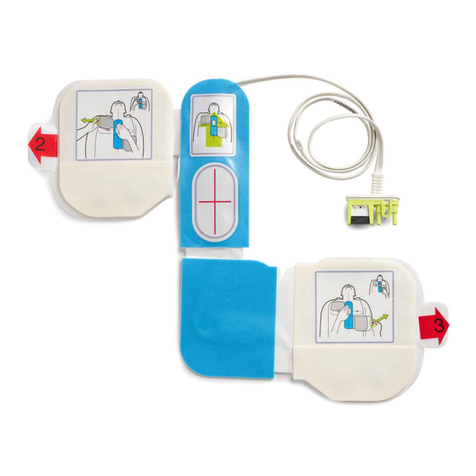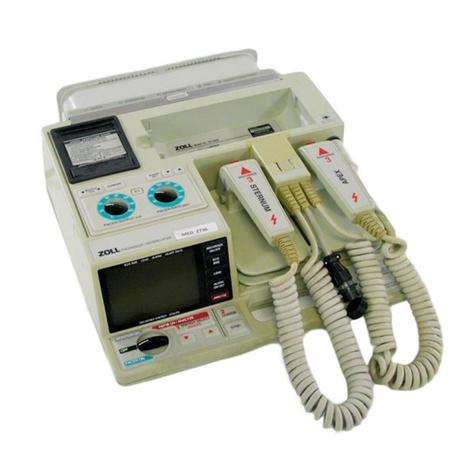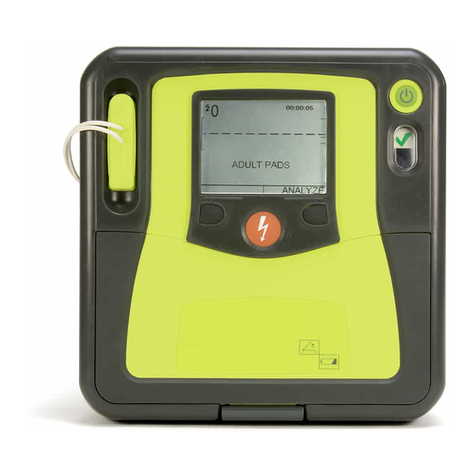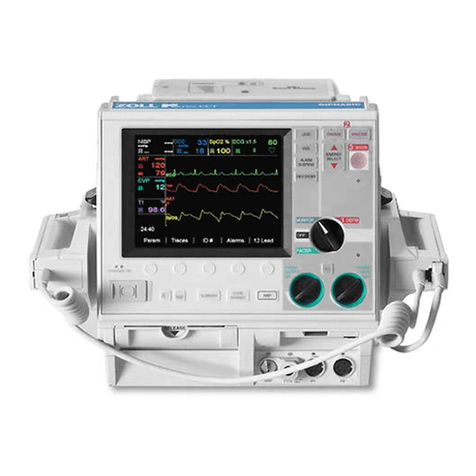
9/131
Les risques potentiels associés à la réutilisation d’un dispositif
à usage unique comprennent notamment :
• Infection potentiellement mortelle
• Choc toxique lié à une dégradation des matériaux
• Risque accru de thrombose
• Efficacité d’échange thermique réduite
• Défaillance du dispositif
1. Le cathéter doit être positionné de manière à ce que son embout
distal se trouve dans la veine cave supérieure, au-dessus de la
jonction de la veine avec l’oreillette droite, et orienté parallèlement
à la paroi vasculaire. S’assurer sous contrôle radiographique
que le cathéter ne se trouve pas dans l’oreillette droite ni dans
le ventricule droit. L’embout distal du cathéter doit être positionné
au-dessus de la veine azygos ou de l’éperon trachéal, suivant
l’anatomie qui peut être visualisée le plus facilement.
2. Les complications possibles associées aux cathéters veineux
centraux sont notamment : perforation auriculaire ou ventriculaire,
tamponnade cardiaque, embolie gazeuse, embolie par
cathétérisme, lacération du canal thoracique, bactériémie,
septicémie, thrombose, perforation artérielle accidentelle,
formation d’hématomes, hémorragie, lésion d’un nerf
et dysrythmie.
3. Tous les raccords Luer-Lock et tous les bouchons doivent être
solidement serrés pour éviter les embolies gazeuses ou les
pertes de liquide ou de sang.
4. Ne jamais exercer de force excessive pour déplacer le cathéter
ou le fil-guide. En cas de résistance, déterminer la raison
du blocage sous contrôle radiographique.
5. Le passage du fil-guide dans le cœur droit peut entraîner
une dysrythmie, un bloc de branche droite ou une perforation
de la paroi vasculaire, de l’oreillette ou du ventricule.
6. Utiliser uniquement du sérum physiologique stérile pour
l’amorçage du cathéter. Le sérum sert également de liquide
en circulation dans le cathéter.
7. Inspecter régulièrement le débit et la position correcte du cathéter
ainsi que la contention du pansement et le serrage des raccords
Luer-Lock. Utiliser les repères centimétriques pour déterminer
si la position du cathéter a changé. Les cathéters à ballonnet
à plusieurs voies sont associés à un risque potentiel de traitement
inadéquat, y compris un défaut de perfusion des médicaments
par les voies de perfusion.
8. La pénétration de l’embout du cathéter dans le cœur ou le
déplacement du cathéter par rapport à la paroi vasculaire
ne peuvent être détectés que sous contrôle radiographique.
Si la position du cathéter a changé, effectuer un examen
radiographique pour confirmer la position de son embout.
9. Pour effectuer un prélèvement sanguin, fermer temporairement
les ports de perfusion utilisés pour la perfusion de solutions.
10. Les prélèvements sanguins doivent être effectués uniquement
avec une seringue de 30 ml maximum.
11. L’alcool et l’acétone peuvent affaiblir la structure du matériau en
polyuréthane. Il convient donc de faire preuve de prudence lors
de la perfusion de médicaments contenant de l’alcool ou lors de
l’utilisation d’alcool ou d’acétone pour le nettoyage et l’entretien
de routine du cathéter. Ne pas utiliser d’alcool pour éliminer les
caillots présents dans le cathéter.
12. Pour éviter d’endommager le cathéter, utiliser uniquement
la languette et le clip de suture ZOLL fournis dans le kit.
13. L’utilisation d’une seringue de moins de 10 ml pour irriguer
le cathéter ou éliminer les caillots d’un cathéter obstrué peut
provoquer des fuites intraluminales ou la rupture du cathéter.
14. Ne pas utiliser les raccords Luer-Lock orange marqués « IN »
(ENTRÉE) et « OUT » (SORTIE) pour la perfusion d’un
traitement, car le traitement serait inefficace.
15. La présence de fièvre chez un patient peut être due à des
causes infectieuses ou non infectieuses. L’atténuation d’une
fièvre d’origine infectieuse potentielle nécessite une évaluation
quotidienne méticuleuse du patient à la recherche d’autres
signes d’infection.
16. Faire preuve de prudence lors de la perfusion de médicaments
dont les propriétés peuvent être altérées par des températures
froides (jusqu’à 4 °C). Les solutions contenant du mannitol sont
sensibles à la température et ne doivent pas être administrées
par le cathéter, sauf en cas de bolus intraveineux rapide d’une
concentration maximale de 20 % de solution de mannitol,
suivi d’une solution physiologique salée. L’administration de
solutions de mannitol d’une concentration supérieure à 20 %
au moyen d’un goutte-à-goutte ou d’une pompe à perfusion
nécessite l’utilisation d’une ligne de perfusion séparée.
17. Tamponnade cardiaque : la mise en place de cathéters
à demeure dans l’oreillette droite est une pratique qui peut
entraîner une perforation ou une tamponnade cardiaque.
Les médecins pratiquant des cathétérismes veineux centraux
doivent prendre en compte ce risque de complication potentiel-
lement mortelle et éviter d’introduire le cathéter trop profondément,
par rapport à la taille du patient. La position effective de l’embout
du cathéter à demeure doit toujours être confirmée sous contrôle
radiographique après l’insertion. Les cathéters veineux centraux
ne doivent être introduits dans l’oreillette droite que si une
intervention relativement courte justifie spécifiquement cette
approche, telle que l’aspiration d’une embolie gazeuse au cours
d’une neurochirurgie. Ces interventions sont néanmoins risquées
et doivent faire l’objet d’une surveillance et d’un contrôle rigoureux.
18. Le cathéter est recouvert d’héparine. Cet anticoagulant peut
déclencher ou aggraver une thrombocytopénie induite par
l’héparine (TIH) préexistante.
AVERTISSEMENT. Lors du raccordement d’ensembles/
systèmes de perfusion à un cathéter ZOLL, s’assurer que
la pression ne dépasse pas 100 psi/689 kPa.
19. Certaines pathologies peuvent être aggravées lorsque les
patients sont placés intentionnellement sous hypothermie.
Il convient de surveiller étroitement l’homéostase des patients
au cours de l’hypothermie.
• Troubles du rythme cardiaque – à la fois bradycardie
et tachyarythmie ventriculaire.
• Formation de caillots et fonction de coagulation. Les patients
présentant des risques de troubles de la coagulation doivent
être surveillés de près au cours de l’hypothermie.
•Gaz sanguin et analyse du pH. L’hypothermie modifie le
pH et la pression partielle du gaz carbonique dans le sang
artériel (PaCO2) au repos. Les médecins doivent prendre
en compte l’effet de la température sur le résultat.
• Une hypothermie prolongée affaiblit la réaction immunitaire
et la fonction pulmonaire.
20. Éviter de manipuler, d’acheminer, et/ou de retirer le fil-guide avec
revêtement au travers d’une canule ou d’une aiguille métallique.
La manipulation, l’acheminement et/ou le retrait au travers d’un
dispositif métallique sont susceptibles d’entraîner la destruction
et/ou la séparation du revêtement extérieur et de générer
la présence de résidus dans le système vasculaire, pouvant
provoquer des événements indésirables non souhaités (voir
ci-dessous) qui nécessiteront une intervention supplémentaire.
• Inflammation stérile ou granulomes sur le site d’accès
• Embolie pulmonaire
• Infarctus pulmonaire
• Embolie du myocarde
• Infarctus du myocarde
• AVC embolique
• Infarctus cérébral
• Nécrose tissulaire
• Décès
